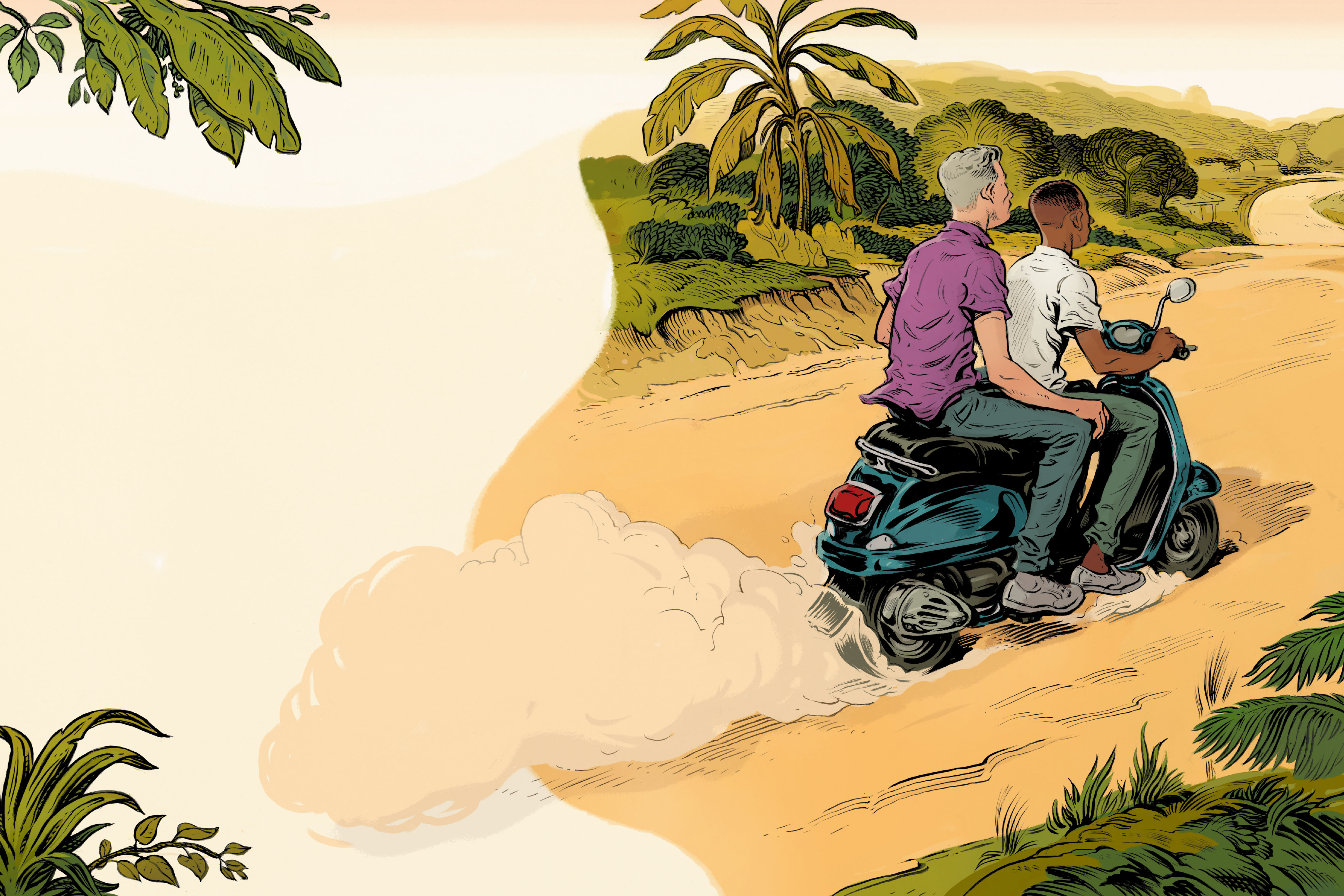Muck Diving at Night in East Timor
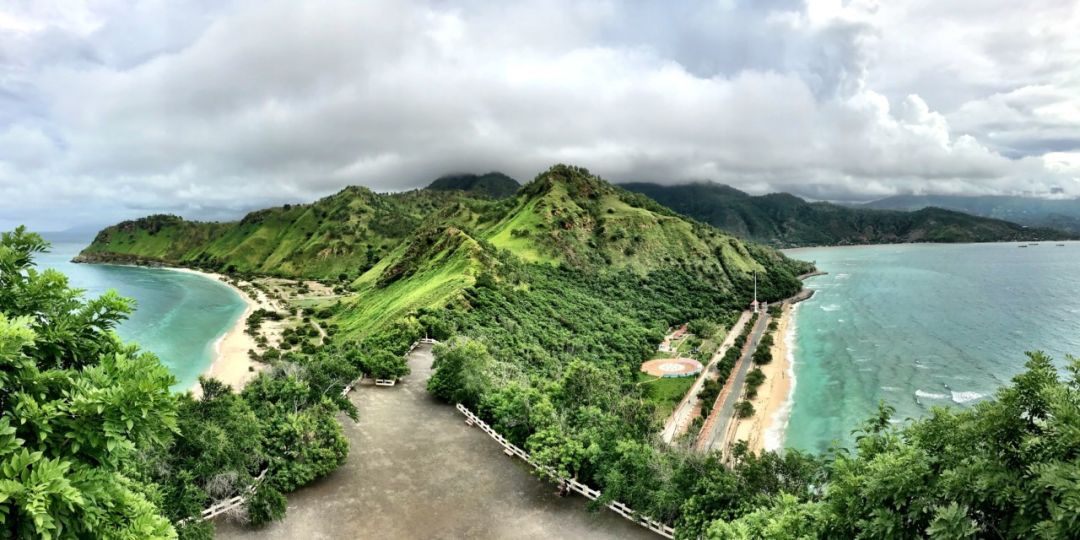
Image: Bill Wiatrak
I’m sitting in an airport of a country you’ve probably never heard of. It’s the newest country in Asia. It became independent in 2002 after a 26-year-long bloody struggle with Indonesia. I’m talking about Timor-Leste, also known as East Timor.
Timor is one of the easternmost islands in Indonesia and means “east” in the native language. So, East Timor translates to “East East." That probably makes more sense than West Timor, which is the section of the island controlled by Indonesia. East Timor, as the name suggests, is the eastern part of the island as well as a small enclave situated in the Indonesian half. The country was a Portuguese colony from 1903 until 1976, so the majority of the population is Catholic, and Portuguese is still spoken. The country got its independence in 2002, and it’s still finding its footing. Prices are higher than surrounding countries and not everything flows as smoothly as it should, but you have to cut the fledgling country some slack. Imagine visiting the U.S. in the 1790s shortly after its independence from England. The internet must have been awful.
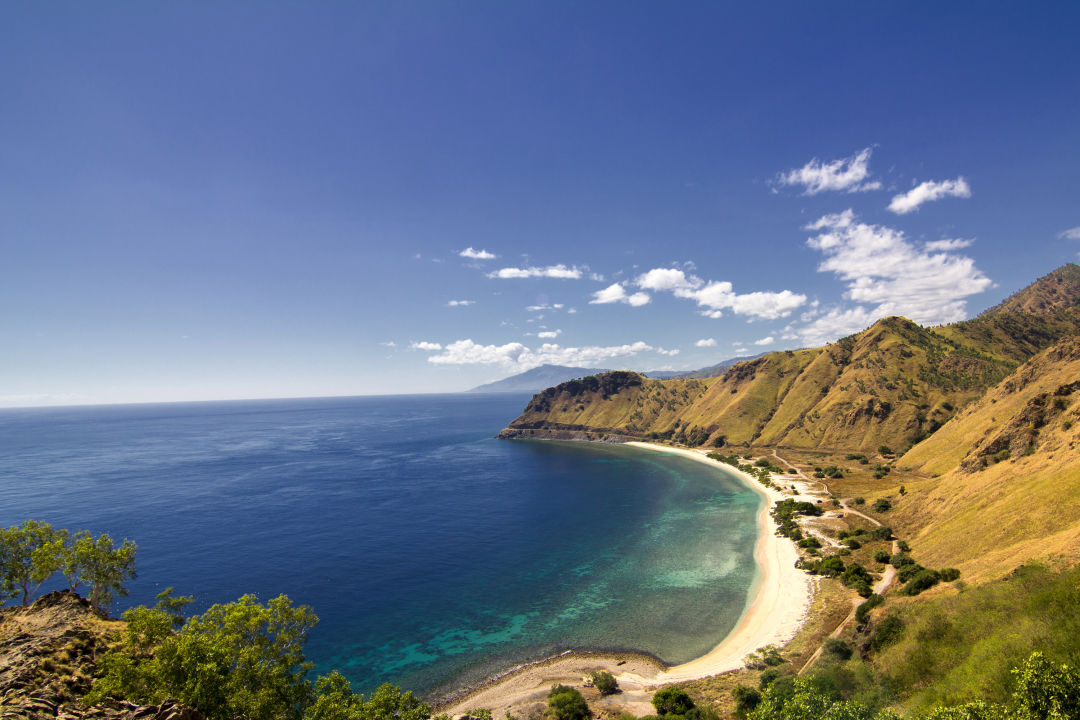
A view of the coastline in Dili.
Image: gaborbasch/Shutterstock.com
East Timor is a pretty country. The mountains frame the capital city of Dili and a giant statue of Christ stands in the hill with arms spread, welcoming visitors. There’s not many non-Timorians lingering in the country. Most Westerners are here for work. I met an Aussie who owns a hotel, a French girl that operates a dive shop, some UN people, oil and gas workers and a few random travelers like myself. Dili is a typical ramshackle Asian town with cement buildings and noisy streets jammed with motorcycles, but has little patches of beautiful parks and a beautiful coastline.
The greatest asset the country offers travelers is below the surface. Literally. Timor-Leste boasts some amazing diving due to its location as well as its lack of industry and commercial fishing. Many hardcore diving enthusiasts head for Atauro, the 12 mile long island north of Dili. You can get there for $5 on Saturdays (with the big ferry). All other days are $45 by speedboat. Since my visit was short, I opted to do a night dive in Tasitolu, just west of Dili. The area is famous for its “muck diving.”
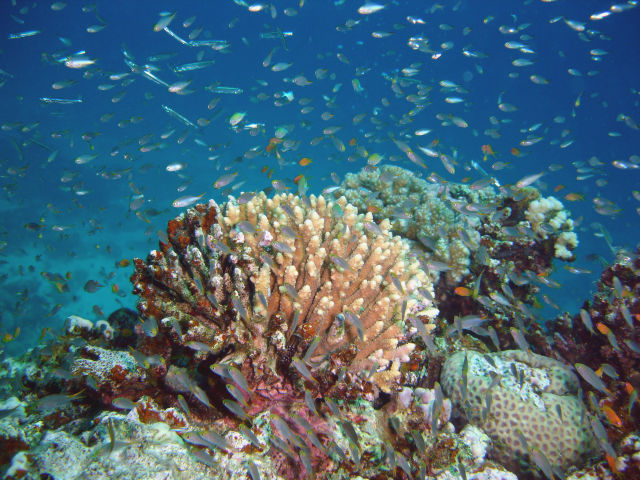
Coral reef in East Timor.
Image: Shutterstock.com
I must admit, muck diving doesn’t sound very glamorous. The idea of walking in muck isn’t particularly pleasant, but in actuality the sport is better described as macro-diving. Instead of focusing on larger fish and big reefs, as is often the case, divers opt for sandy bottoms and small coral areas where small, unusual creatures can be found. You have to do a little digging and prodding, but you’ll be amazed at what turns up. There are some strange animals in these waters.
My dive started at sunset. The equipment we used was the same as what you take on a day dive except for the addition of a powerful flashlight. We entered from the shore, navigated through the waves and descended gradually to about 60 feet deep. There were patches of coral and lots of nudibranchs. There are all shapes and sizes of these weird creatures that look like things Hieronymus Bosch might have painted. Some were tall with funky tentacles, others like some Chihuly glass dish with zebra fish hiding under their folds.
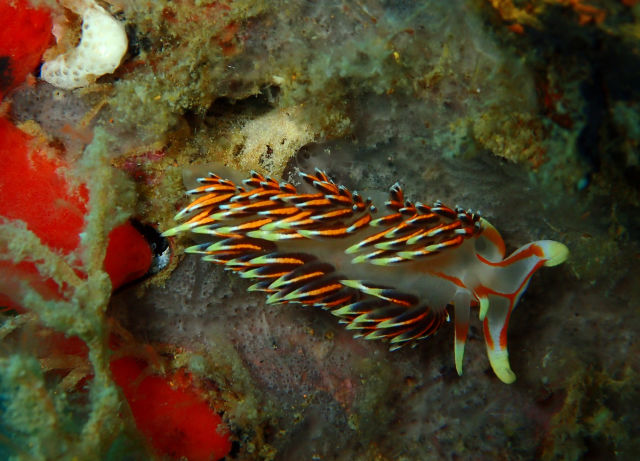
It’s very surreal diving in the dark. When you turn off your flashlight and move your arms, you can see the little phosphorescent animals light up even though you can’t see the surface of the ocean above you. We saw a small octopus who mimicked the sand so well he was almost invisible. Pairs of squid and tiny seahorses remained rooted in their spots, eyeing us suspiciously. The crabs were out foraging and doing whatever crabs do at night. We even saw an embarrassed hermit crab scurrying around trying to locate his shell.
The dive was about an hour long and one of the most interesting dives I’ve ever done. That’s really saying something, since, after all, it was just muck diving.
There’s not much nightlife in Dili. I was lucky to find the only live music venue in town. As is mostly the case, the people you find in bars in this part of the world are a handful of ex-pats and tourists who like the road less traveled. East Timor is still so new it doesn’t even make its own beer. On a similar subject, it doesn’t even have its own currency. The standard monetary unit is the U.S. dollar.
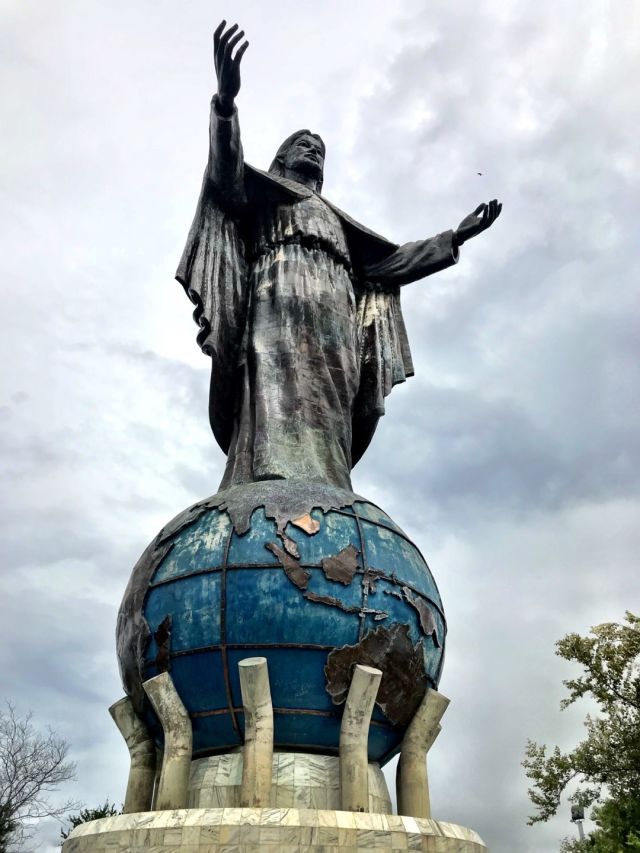
The giant Cristo Rei de Dili.
Image: Bill Wiatrak
East Timor is proud of its political independence and there are several statues scattered through Dili that celebrate the events and struggles of its people. The Resistance Museum also chronicles the history from Portuguese occupation to present. The subject is sobering, but at least there’s a happy ending. There are video clips, guns, and lots of photos to commemorate their colorful history.
There are also several religious statues scattered throughout the town. At first glance, you might be reminded of the Christ statue in Rio when you see the Cristo Rei standing on the hill overlooking Dili. There’s a maze of stairs that pass by panels that represent each station of the cross. It’s about a 30-minute hike to the top, but the view of the peninsula from above is breathtaking. If you’ve got a little daredevil in you, you can rent a motorcycle for the day and join all the other bikers buzzing down the road to get there. It’s an incredibly scenic coastline with waves crashing on the rocks. It’s a great feeling as long as you remember to drive on the left side of the road.
The cemeteries are different than anything you’ll see in Asia. Because the country is 98 percent Christian, there are very few of the cremation rituals that you'll find throughout most of Asia. Instead, good old-fashioned cemeteries are crammed with colorful sometimes-completely-tasteless monuments butting against each other with no rhyme or reason. Religion is one of the factors that make the people of Timor-Leste different than their neighbors. The only other predominantly Christian country in all of Asia is the Philippines. Years of Spanish and Portuguese influence has left its mark on both countries in terms of religion, food, attitude and language. No, East Timor is nothing like Europe. It’s decidedly Asian, but don’t be surprised to hear “Obrigado” and lots of other borrowed words even though Portuguese was banned by the Indonesians during their quarter-century rule.
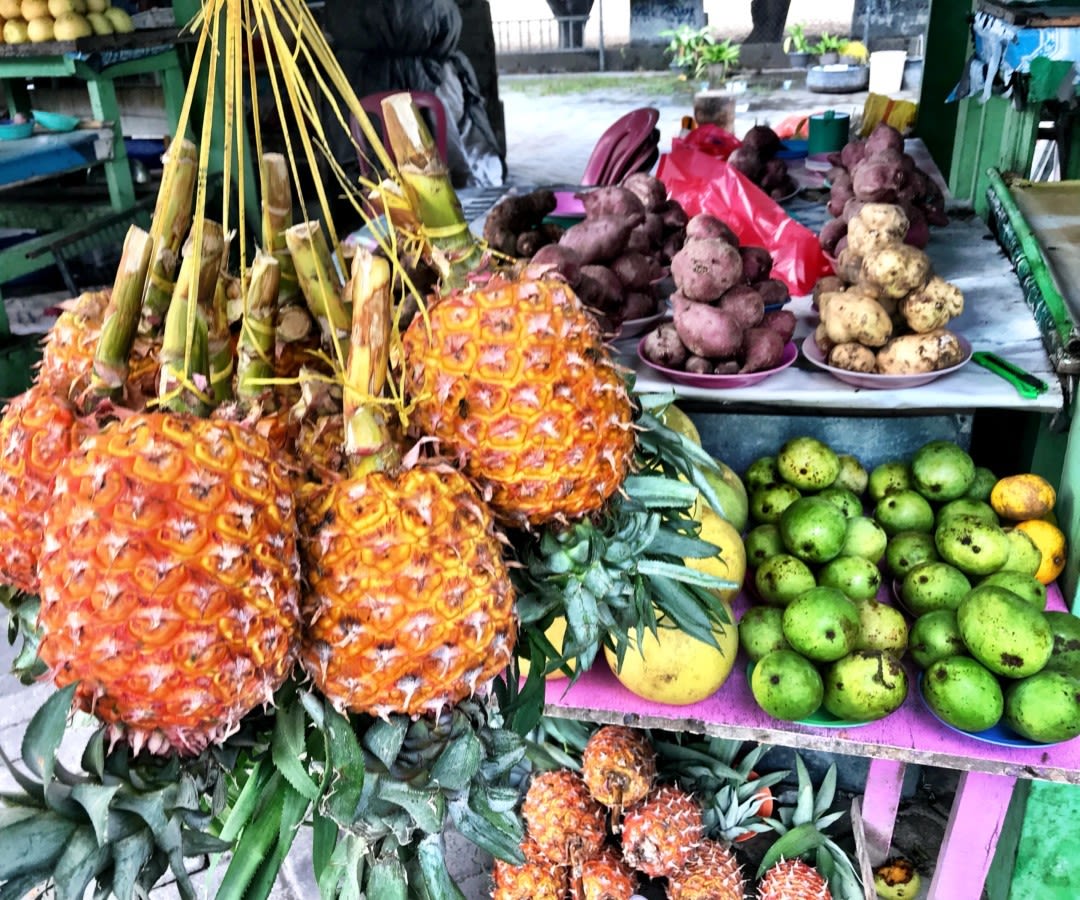
Tropical fruits delight the palate in Dili.
Image: Bill Wiatrak
East Timor, like Indonesia, is rich with tropical fruits, and you’ll find lots of great dishes that blend Portuguese and tropical flavors together. Seafood is very popular as well as rice and other Asian staples. Surprisingly, American and Japanese fast food are taking root in this developing country and Burger Kings are popping up everywhere.
So what’s going to happen with East Timor? That’s the big question. If you’re interested in developing countries, now might be the best time to go. It may be completely different 10 years from now as it weighs it options and decides what it wants to be when it grows up.



